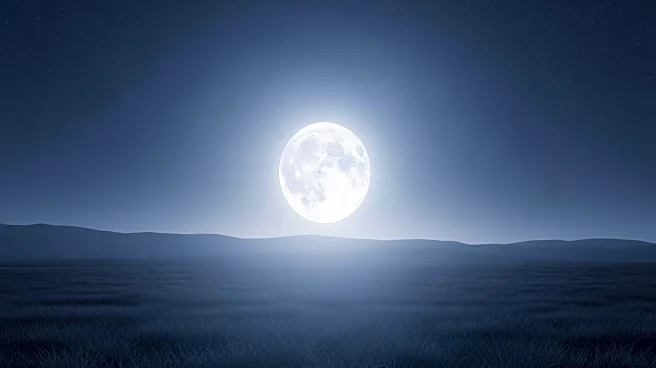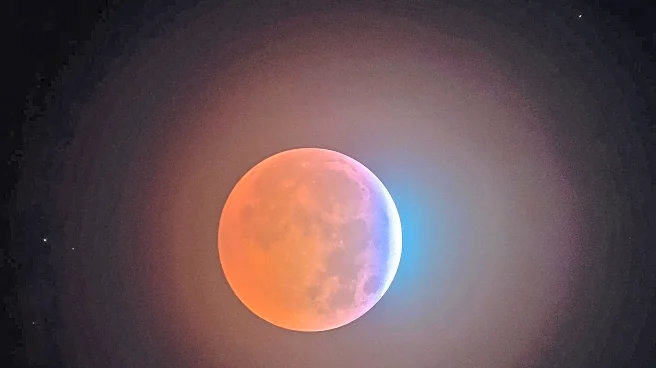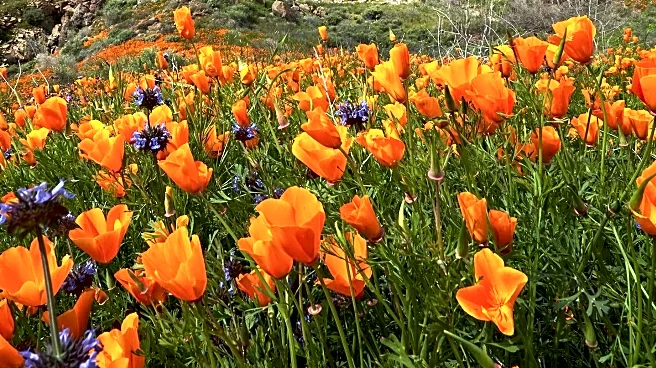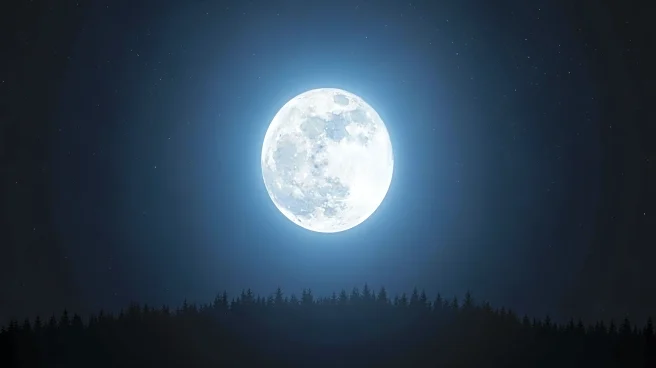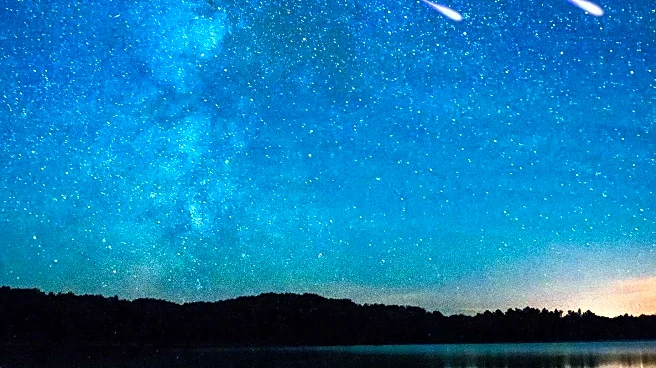What's Happening?
The Beaver Moon, the largest and brightest supermoon of 2025, is set to rise tonight, offering a spectacular view for skywatchers. Occurring near perigee, the moon will appear up to 14% larger and 30%
brighter than usual. This supermoon is the closest since 2019 and is part of a series of three consecutive supermoons. Known as both the Beaver Moon and Hunter's Moon, this event is linked to historical and astronomical traditions. Observatories and news outlets are providing guidance on optimal viewing times and locations.
Why It's Important?
Supermoons offer a unique opportunity for public engagement with astronomy, drawing attention to celestial phenomena and encouraging interest in space science. The event may also impact coastal areas, with potential for amplified tides and nuisance flooding. Understanding the dynamics of supermoons can contribute to broader studies of lunar effects on Earth, including tidal patterns and ecological impacts.
What's Next?
Skywatchers are encouraged to view the supermoon during moonrise and dusk for the most dramatic effect. Observatories and online platforms, such as the Virtual Telescope Project, are hosting live streams for those unable to view the event in person. The next supermoon is scheduled for December 4, 2025, offering another chance to observe this celestial phenomenon.
Beyond the Headlines
The dual naming of the moon reflects cultural and historical influences on astronomical terminology, highlighting the intersection of science and tradition. The event also emphasizes the role of public outreach in science, with organizations leveraging technology to enhance accessibility and engagement.


